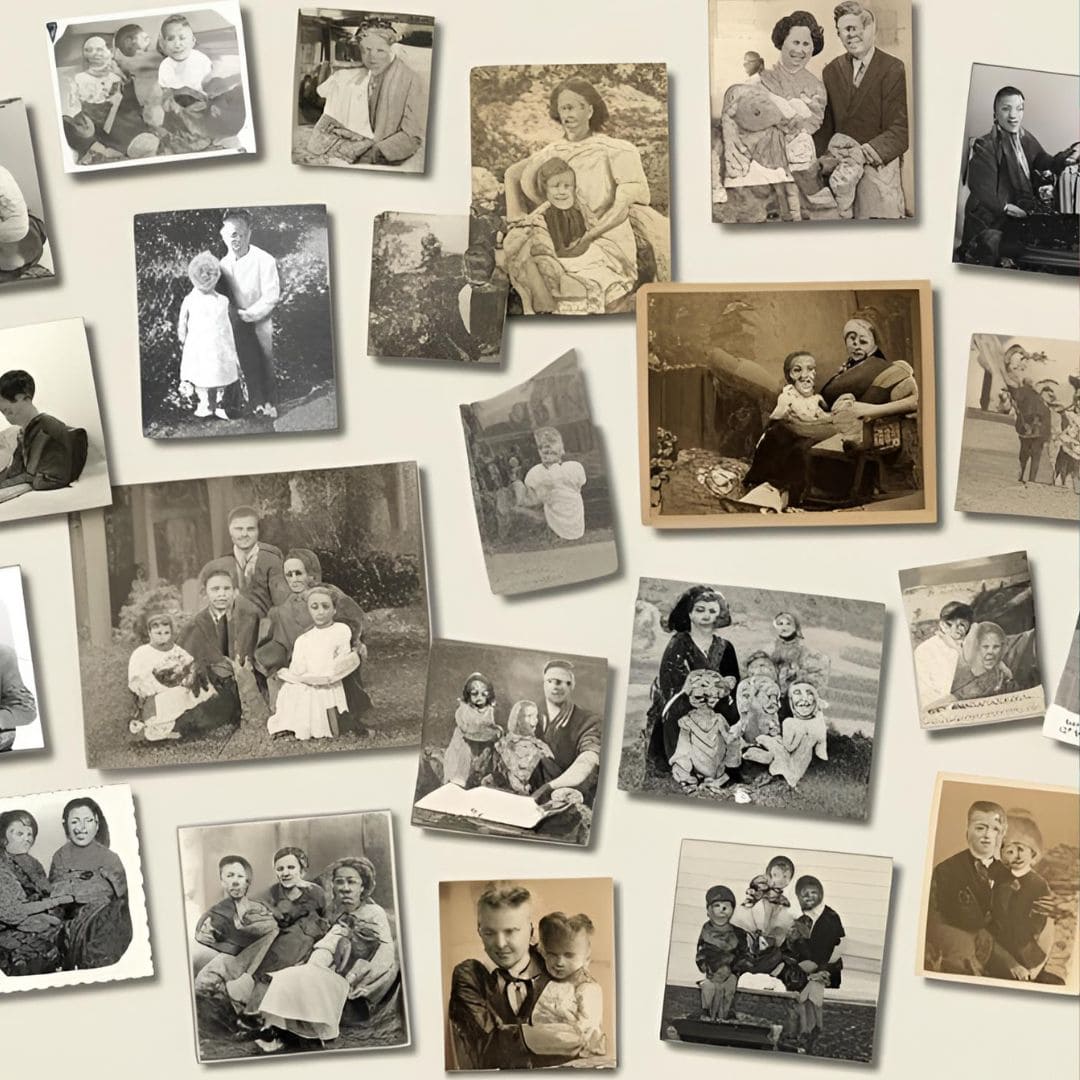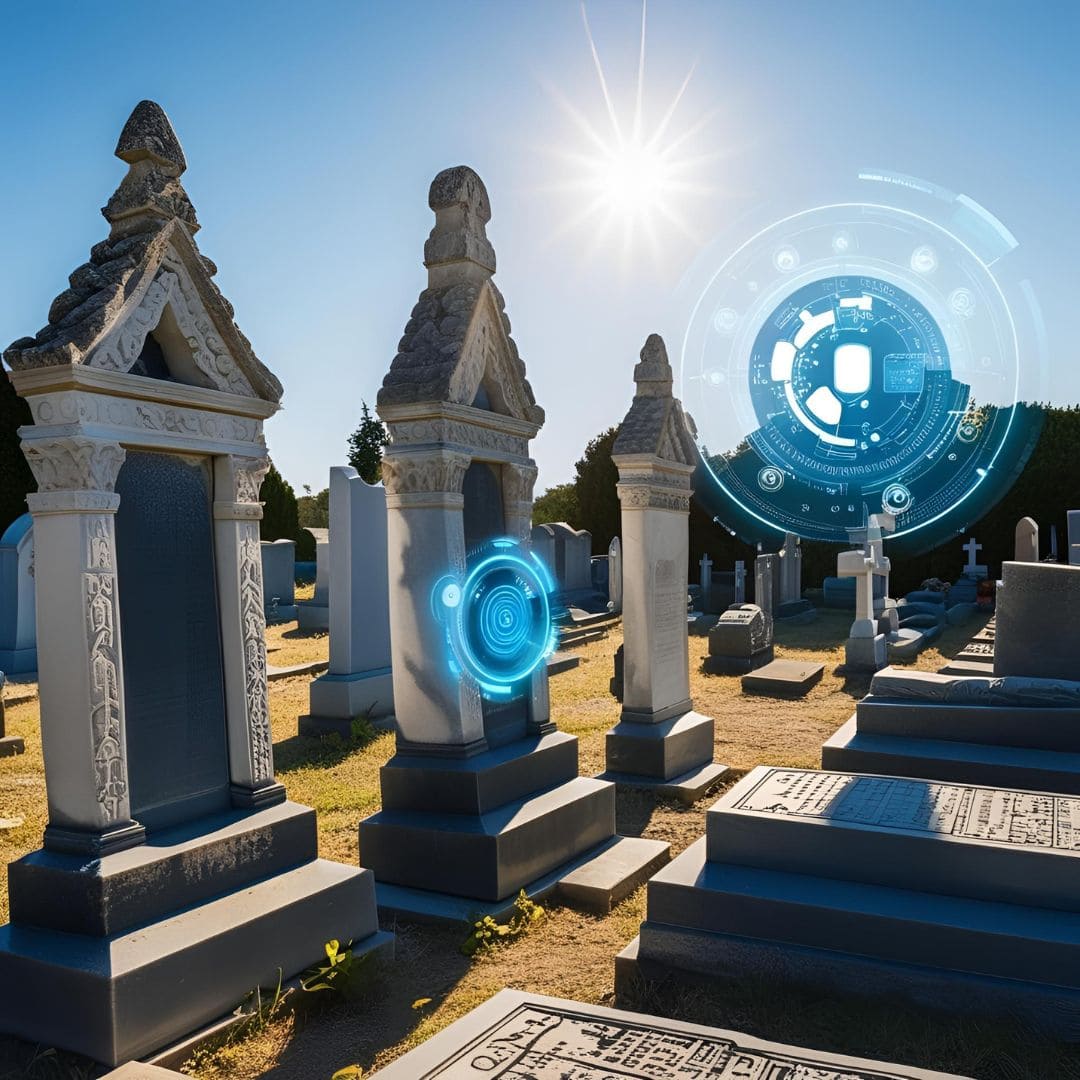Traveling to distant places to explore historic cemeteries is a dream for many history and culture lovers. Thanks to advances in artificial intelligence and virtual reality, it’s now possible to embark on fascinating journeys without leaving home. Virtual tours of iconic cemeteries like Père-Lachaise in Paris or Recoleta Cemetery in Buenos Aires offer an immersive and enriching experience for curious minds and history enthusiasts.
How AI and VR Are Transforming Cemetery Tourism
Artificial intelligence and virtual reality technologies have revolutionized how we access historical and cultural sites. Through detailed 3D mapping, AI-driven storytelling, and interactive virtual environments, visitors can explore monuments, gravestones, and mausoleums with remarkable realism.
Platforms specializing in virtual heritage preservation use AI to recreate environments with high precision. From authentic textures on ancient tombstones to the atmospheric sounds of rustling leaves and distant footsteps, these tours provide an experience that rivals being physically present.
Virtual reality headsets enhance this experience by placing users directly into a simulated version of the cemetery, allowing 360-degree exploration. However, even without VR equipment, many AI-powered web platforms offer accessible and engaging tours through any desktop or mobile device.
Virtual Tours of Iconic Cemeteries
Several historic cemeteries now offer official or third-party virtual tours, bringing their stories and artistry to a global audience.
Père-Lachaise Cemetery in Paris is one of the pioneers in this field. With virtual tour platforms, visitors can navigate its labyrinthine pathways, visiting the graves of famous figures like Jim Morrison, Edith Piaf, and Oscar Wilde. Interactive features allow users to click on specific tombs and learn detailed biographies, listen to audio narrations, and view historical photographs.
La Recoleta Cemetery in Buenos Aires is another excellent example. Its ornate mausoleums and labyrinthine alleys can be explored virtually with AI-enhanced mapping technologies. Some tours even offer thematic experiences, such as “Legends of La Recoleta,” focusing on famous myths and local folklore.
Highgate Cemetery in London offers limited but growing virtual access, showcasing its Victorian-era sculptures, overgrown pathways, and iconic graves like those of Karl Marx and George Eliot. Guided virtual experiences often include historical context about Victorian burial customs and architecture.
Other noteworthy cemeteries embracing virtual tourism include St. Louis Cemetery No. 1 in New Orleans and Mount Auburn Cemetery in Massachusetts, both offering insights into American funeral traditions and the notable figures buried there.
Best Platforms for Virtual Cemetery Tours
Several specialized platforms and applications provide access to virtual tours of historic cemeteries, often enriched by artificial intelligence features.
Google Arts & Culture offers high-quality virtual tours of various cultural sites worldwide, including cemeteries. By integrating AI with Street View technology, users can “walk” through cemeteries and access curated stories, artwork, and high-definition imagery.
Voices of the Past is an emerging platform focused on digitally preserving cemeteries. It uses AI to reconstruct missing or damaged gravesites, providing a more complete visual experience. Some virtual cemeteries even incorporate AI-generated reconstructions of how the site looked decades or centuries ago.
YouVisit and Matterport are other platforms leveraging VR technology to create realistic and interactive cemetery tours. Many universities and historical societies also collaborate with these platforms to offer educational resources alongside the virtual experiences.
Benefits of Exploring Cemeteries Virtually
Virtual cemetery tours offer a wide range of benefits beyond simple convenience. They allow access to sites that may otherwise be difficult to reach due to distance, mobility issues, or preservation efforts that limit physical visitation.
For students, historians, and cultural enthusiasts, these tours serve as valuable educational tools. Many platforms integrate detailed archival information, oral histories, and AI-generated narratives that enrich the visitor’s understanding of the site’s historical context.
Virtual tours also contribute to conservation. Reducing foot traffic in fragile historical cemeteries helps preserve them for future generations while still sharing their stories with the world.
Another major advantage is customization. Users can tailor their virtual journey according to specific interests, whether focusing on famous burials, architectural styles, or cultural traditions related to death and mourning.
How to Enhance Your Virtual Cemetery Experience
Maximizing the value of a virtual cemetery tour involves a few simple strategies. Using a VR headset where possible greatly enhances immersion, making the experience feel almost lifelike. High-quality headphones add atmospheric sounds that deepen the sense of place.
Researching the cemetery beforehand allows visitors to better appreciate what they are seeing. Reading about the site’s history, notable figures, and cultural significance can transform a simple visual tour into a profound educational journey.
Engaging with community discussions, forums, and online events related to virtual cemetery tours can add a social element to the experience. Many historical organizations host live virtual tours with expert commentary, offering opportunities to ask questions and share insights.
Creating personal notes or a virtual scrapbook of the experience helps to preserve the memories and deepen the connection with the places explored.
Future Trends: AI and Virtual Heritage Tourism
The future of virtual cemetery tourism looks incredibly promising, driven by rapid developments in AI and VR technologies. Emerging tools promise to make these experiences even more interactive and personalized.
Augmented reality (AR) features are being developed that allow users to experience cemeteries in mixed reality environments, combining virtual reconstructions with real-world settings. AI-driven guides capable of answering user questions in real time are becoming more sophisticated, creating a sense of dialogue rather than passive observation.
As 3D scanning technologies improve, expect even more detailed recreations of historic sites, capturing nuances that were previously impossible to convey digitally. Multisensory VR experiences, including simulated weather conditions and ambient scents, are also being explored to create a fuller sense of presence.
Through these innovations, virtual cemetery tours are set to become even more enriching, blending technology with history to offer meaningful, memorable journeys through time and culture.
Step into History Without Leaving Home
Exploring historic cemeteries through artificial intelligence and virtual reality is a powerful way to connect with the past, discover untold stories, and appreciate the artistry and traditions that define cultures around the world. Whether for education, research, or pure curiosity, these virtual experiences open the doors to some of the world’s most fascinating resting places, all from the comfort of home.









